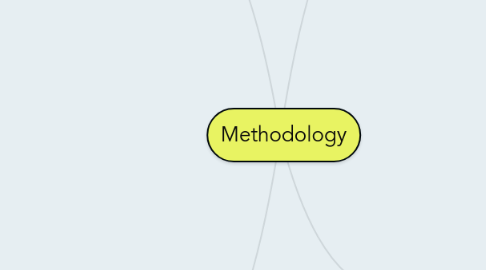
1. Experimental Design
1.1. Matched Pairs
1.1.1. Two groups of participants are as similar as possible
1.2. Independent Measures
1.2.1. Participants are only in one condition
1.3. Repeated Measures
1.3.1. Participants take part in all conditions
2. Using Brain Damaged Patients as a Research Method
2.1. Information
2.1.1. Used to study mental processes such as memory
2.1.2. Techniques such as brain scanning, interviewing and observing are used
2.1.3. Processes often compared to brains where there is no damage
2.2. Strengths
2.2.1. Qualitative data
2.2.1.1. Detailed accounts of behaviour can be used
2.2.2. Quantitative data
2.2.2.1. Progress can be easily and accurately seen
2.2.3. Unique insight into the brain
2.2.4. Conducted in naturalistic setting
2.2.4.1. Real responses can be examined
2.3. Weaknesses
2.3.1. Only based on one/a few persons
2.3.1.1. Cognitive processes may be unique to that person
2.3.1.1.1. less reliable
2.3.1.1.2. less generalizable
2.3.2. Expensive
2.3.2.1. Vast amounts of money spent to study HM
2.3.3. Interpretation may be required
2.3.3.1. Subjectivity
2.3.4. Time Consuming
3. Experiments
3.1. Laboratory
3.1.1. strict control over variables
3.1.2. standardised procedures
3.1.3. controlled environment
3.1.4. manipulation of IV
3.2. Field
3.2.1. natural setting
3.2.2. manipulation of IV
3.3. Quasi/Natural
3.3.1. IV is natural
3.3.1.1. eg. Male/Females
3.3.2. researcher simply records the effect on DV
3.3.3. may take place in natural setting or lab
4. Qualitative Data
4.1. Information
4.1.1. Words/images that describe participants views
4.1.2. Gathered through open questions in interviews/questionnaires, literature reviews, observations and diary analysis
4.1.3. Provides detailed accounts of a person's experiences, feelings and beliefs
4.1.4. Often gathered in case studies
4.2. Strengths
4.2.1. More in-depth analysis
4.2.1.1. More meaningful conclusions about the participants views
4.2.2. Qualitative techniques are more holistic than reductionist
4.2.3. Can be converted into quantitative data through statistical analysis
4.3. Weaknesses
4.3.1. Difficult to draw comparisons between groups or to arrive at specific, reliable conclusions
4.3.2. Time consuming
4.3.3. Difficult to conduct as can be laborious
4.3.4. Can lack replicability
4.3.4.1. Not standardized
